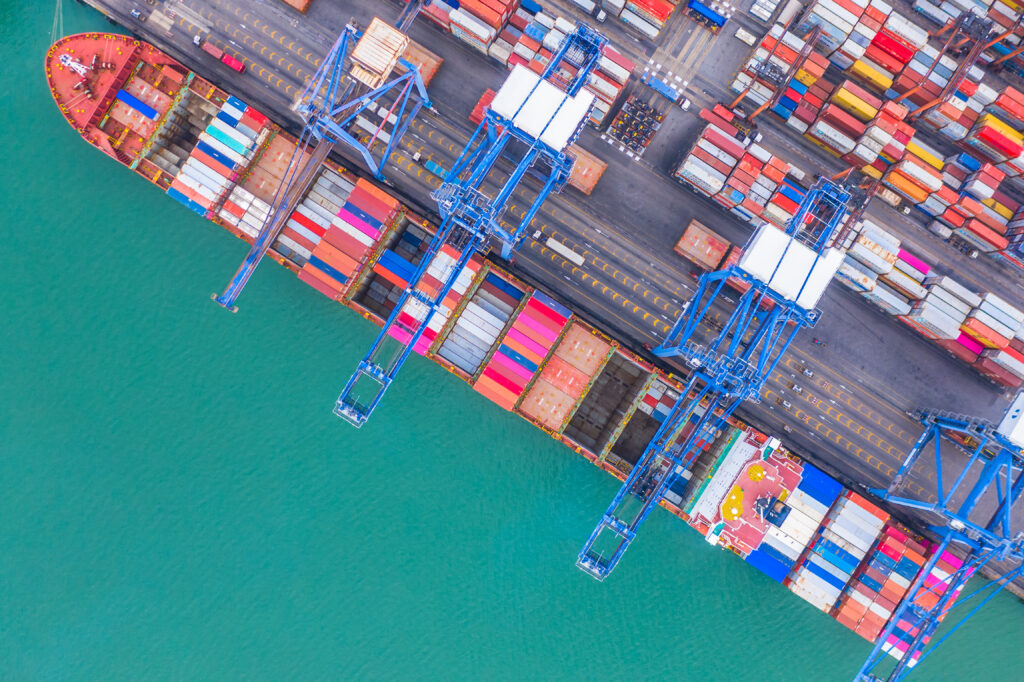Grain Connect: the economics of an altnet
The Equitix-backed UK fibre company is turning profitable in a challenging market by keeping installation and operating costs low. Grain’s CEO Richard Cameron discusses with Rory Gallivan how digging your own ducts the right way is key to success.
The flood of investment in UK alternative fibre network operators, or altnets, in the early 2020s, has now reduced to a trickle amid concerns over rising costs and competition.
Investor caution has put the spotlight on the amount it costs to build networks, with altnets that incur low costs seen as most likely to achieve a decent return on their investment.
One way altnets have sought to keep costs down is by exploiting Physical Infrastructure Access (PIA) agreements with incumbent telecom company BT Openreach, enabling them to use the operator’s poles and ducts so they don’t have to do all the digging and other work themselves.
But counterintuitively, one player that has been focused on low-cost connections since it was founded in 2016, Grain Connect, is not going down this route, opting instead to build its own network from scratch.
“PIA is just not a cheaper solution,” says Grain’s Chief Executive Richard Cameron, a former executive at BT where he held roles including CFO of the global services business. While it may offer savings when building networks, “with full end-to-end costs of PIA we would be paying twice as much,” he says.
The full costs he refers to, aside from building a network ready to connect to homes, mainly include the cost of completing the final connection of a customer once they have signed up as subscriber to full-fibre services.
Passing premises
Grain’s average cost to make a home “ready for service” (RFS) – meaning that a home can be connected following a visit from an engineer who completes the final connection between the interior of the home and network – is GBP 400, Cameron says.
Some altnets have achieved lower costs per premise passed (CPPP), notably DigitalBridge-backed Netomnia, which says it averages GBP 250 per home, and Foresight-backed F&W Networks, whose recent CPPP levels have been as low as GBP 140. But others incur costs well in excess of GBP 500.
(There is a subtle difference between a premise that has been “passed” and one that is RFS, with RFS being slightly more advanced, but there tends not to be a large difference in the number of homes passed and RFS among those altnets that declare both figures.)
Grain keeps its CPPP down by focusing on urban areas and only connecting properties where the distance between properties is less than 12 metres.
This is an evolution from the company’s initial focus when it was formed by property services company Pinnacle Group and Cumbria-based telecoms group Solway Communications to provide fibre connections for new residential developments across the UK.
This enabled the company to keep build costs to a minimum because laying fibre connections for new housing does not involve work such as digging up an existing street, but sticking to newbuilds exclusively limited to the scale Grain could achieve, Cameron points out.
It, therefore, in late 2020 made a decision to also target existing homes that it could connect at minimal cost. The limit of 12 metres per home is not overly restrictive, says Cameron, who notes that it only excludes very large properties or those with large driveways or gardens.
In 2021, it secured the backing of infrastructure investor Equitix, which participated in a GBP 75m equity financing of the company, supporting Grain’s initial target to pass 300,000 homes and businesses.
Grain, which as well as being an infrastructure owner acts as an internet service provider (ISP) that deals directly with householders as customers, recently reported that it has around 220,000 premises RFS and 30,000 customers. Although the RFS figure is much lower than those of larger altnets such as CityFibre, Hyperoptic and Netomnia, Grain is targetting EBITDA profitability this year, ahead of many other altnets.
According to equity analysts at Berenberg, who covered Grain as part of a wider review of UK fibre in April: “This suggests that altnet feasibility is possible at a smaller scale than many investors assume.”
Grain’s most recent financial results for the year ended 31 March 2023 show revenue of GBP 1.55m, up from GBP 661,000 the previous year. For the year ended March 2024, revenue has nearly tripled to GBP 4.5m with total operating costs broadly flat, showing the efficiency of adding incremental customers to the platform, according to Cameron.
Connection costs
While CPPP has become an increasingly important metric for investors as they ponder further investment in altnets, Cameron believes that another major expense is overlooked. This is the cost to make the final connection to a home or other building so that it moves from being RFS to actually having a paying customer.
Cameron says that Grain spends on average less than GBP 200 on these final connections, meaning that on top of the GBP 400 average cost to pass a premise the total cost to connect a customer is less than GBP 600. He says the GBP 200 final connection cost is much lower than that incurred by other operators.
This is because when Grain has a premise ready for service, it has much less work to do than a PIA operator whose network could be up to 150 metres away from the building, requiring two or more engineers compared with the one engineer Grain requires, Cameron says.
Cameron believes that cost is by far and away the main consideration for customers, many of whom see no reason to pay significantly more for an upgrade from fibre-to-the-cabinet (FTTC) service to faster fibre-to-the-premise (FTTP) or full-fibre services.
For this reason, he says costs must be kept to a minimum to avoid passing these onto customers and as a result, Grain seeks to limit the amount it spends on marketing and other expenses. He says Grain spends around GBP 20 on marketing for every customer it signs up, so is “far more efficient than the rest of the industry, which is mainly spending over GBP 100 a customer.”
Operating expenses
Beyond the cost to pass premises, sign up customers and connect them, the other major cost consideration for altnets is operating expenses. Cameron says Grain is “trending towards” GBP 7 a month, which he says is much lower than other players’ operating costs.
Cameron attributes this to measures such as not using outsourced staff for functions other than digging up roads to install the network. Outsourcing staff is “far more expensive on a cost basis than managing them efficiently yourself”, he says.
The other operating expense that Grain avoids is the rental costs that PIA operators face. Although this only amounts to around GBP 1 a month, Cameron sees the potential for this to rise in line with inflation and as BT Openreach faces competition from altnets and thus asks the regulator to allow it to increase PIA tariffs.
So, based on Grain’s costs to get homes ready for service, connect customers and operate the network, what sort of return could Grain achieve?
If it were to sign up a quarter of the homes it passes, taking Cameron’s upper estimates of GBP 400 to pass a home and another GBP 200 to connect a customer results in a cost of GBP 1,800 per customer connected.
Assuming costs per month are GBP 7 and Grain can charge customers GBP 25 a month (a typical approximate price charged by altnets), this would result in annual earnings of GBP 216, a respectable annual return of around 12%, something other altnets building more expensively may struggle to achieve.
Moreover, Cameron believes that it can achieve take-up (homes passed divided by number of paying customers) of “significantly more” than a quarter because it has achieved more than 30% take-up in the first urban areas it targeted, with growth continuing.
Achieving a high take-up is important for Grain given its costs are skewed towards passing premises rather than the final connection. Based on the above figures, if Grain were to sign up half of the homes connected, it would achieve a return of 21.6%.
These figures do not account for factors such as inflation and the potential for further efficiencies as scale increases, but can at least give a rough indication of the returns altnets might achieve as they move to profitability.
For comparison, a spokesperson for Netomnia, which uses PIA, said that on top of its GBP 250 CPPP, its final connection cost is GBP 350 but declined to comment on its operating cost per customer. While the combined CPPP and final connection cost are in line with Grain’s, the lower CPPP means that Netomnia (assuming similar operating costs to Grain) would achieve a higher return with low take-up, though the gap would narrow as take-up rises.
Making comparisons between altnets is tricky though given different definitions of how to calculate the various costs involved in building networks and signing up customers. For example, Grain’s costs to connect include marketing expenses, according to Cameron.
Self-funding
Grain’s low cost to connect premises once they are RFS will speed its path to profitability, Cameron says, because once it signs up customers it will quickly recoup the connection costs. When it achieves profitability it will be able to start investing in its own network without external funding, although this is still being sought as Grain looks to achieve greater scale.
In common with other altnets, Grain last year slowed its expansion, noting that raising capital “is taking longer than it did a year ago”.
With the UK altnet market seemingly in the early stages of large-scale consolidation, Cameron also has an eye on potential M&A activity and believes that Grain’s record of keeping costs down would make it an attractive target for a backer looking for a platform company to consolidate the UK market.
Given that most of the altnet market is focused on using PIA, this would likely involve diluting Grain’s unique approach of digging and owning its own ducts. But Cameron still thinks altnets using PIA could benefit from being run under Grain’s low-cost approach being applied to the general management of the business.
For now though, he believes Grain has a bright future as an independent player given it is already close to profitability despite its small size.
Grain is one of more than 100 UK altnets that have mostly emerged in the last decade, all of which have different business models, varying between self-dig and use of PIA, rural and urban focus and altnets either wholesaling to other ISPs or acting as an ISP itself.
Despite the frenetic activity in the market so far this decade, the market is still in early stages with many UK homes yet to be covered by FTTP networks and no altnets are anywhere near achieving their ultimate ambitions, so time will tell which business models will prosper.
Cameron believes that Grain is already well-placed to prove its business model as a small-scale operator; securing further funding would give him an opportunity to do this on a bigger scale.










